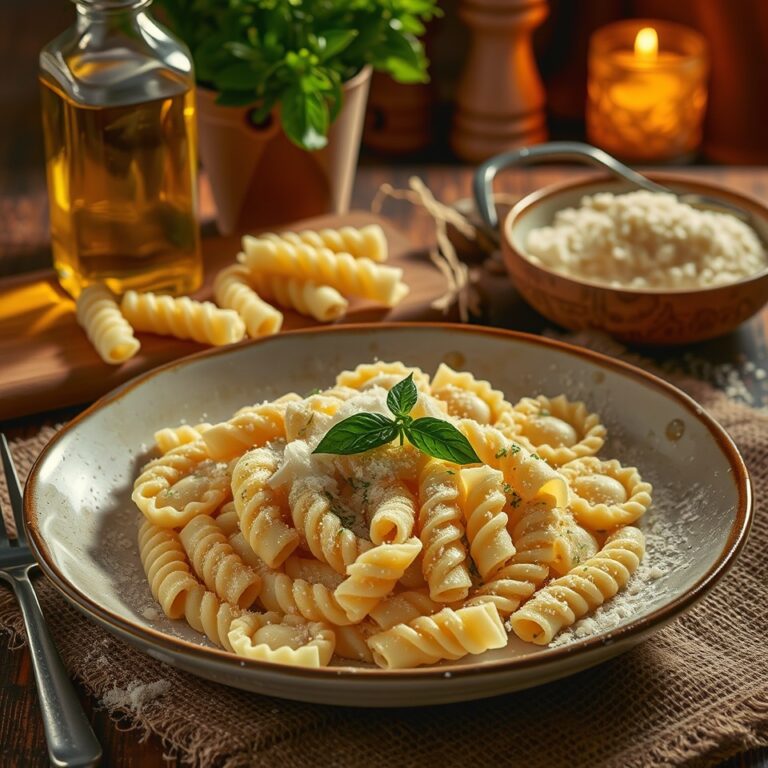GF Pasta Recipe

GF Pasta Recipe
Table of Contents
GF Pasta Recipe
This homemade gluten-free GF pasta recipe is a game changer for anyone with gluten sensitivities or those following a gluten-free diet. With just a few simple ingredients and easy to follow steps, you can make fresh, delicious gluten-free pasta right at home. Whether you’re craving classic spaghetti, fettuccine, or lasagna sheets, this versatile GF pasta recipe will become a staple in your kitchen.
Description
Making your own gluten-free pasta can feel like a daunting task, but with this easy GF pasta recipe, you’ll find that the process is both fun and rewarding. This homemade pasta dough uses a blend of gluten-free flours, including rice flour, potato starch, and tapioca flour, resulting in a smooth and elastic dough that’s perfect for any kind of pasta shape.
One of the common complaints about gluten-free pasta is that it can be too brittle or lacks the chewy texture of traditional pasta. However, this recipe includes xanthan gum, which helps mimic the elasticity of gluten, ensuring a tender, yet sturdy pasta that holds up well when cooked. Plus, you’ll be able to customize your pasta to suit your taste and dietary needs, whether you’re making a light vegetable pasta or a rich, creamy sauce.

While gluten-free pasta from the store can be expensive and often lacks flavor, making your own gives you complete control over the ingredients, ensuring that your pasta is free from additives and preservatives. Once you try this GF Pasta Recipe, you may never go back to store bought again.
This recipe is versatile enough to make spaghetti, fettuccine, ravioli, or even lasagna sheets. With just a few ingredients and some simple tools, you can create fresh pasta from scratch in the comfort of your own kitchen. All you’ll need is a rolling pin or pasta machine, a mixing bowl, and a bit of patience.
Additionally, this GF Pasta Recipe can be made ahead of time and stored in the fridge for a day or frozen for longer storage, making it an excellent choice for meal prep. Once cooked, the pasta pairs beautifully with your favorite sauces from a simple marinara to a rich Alfredo or pesto sauce.
By making your own gluten-free pasta, you not only have control over the ingredients, but you also get the satisfaction of enjoying fresh, delicious pasta that’s 100% gluten-free. Whether you’re new to gluten-free cooking or a seasoned pro, this GF pasta recipe will soon become one of your go to meals.
Ingredients
- 2 cups gluten-free all-purpose flour (make sure it contains xanthan gum)
- 1/2 cup potato starch
- 1/2 cup rice flour
- 1 teaspoon xanthan gum
- 1/4 teaspoon salt
- 2 large eggs (or egg substitute for vegan option)
- 2 tablespoons olive oil
- 1/4 cup water (add more as needed)

Instructions
- Prepare the Dry Ingredients: In a large mixing bowl, combine the gluten-free all-purpose flour, potato starch, rice flour, xanthan gum, and salt. Whisk the ingredients together to ensure they are well incorporated.
- Make a Well in the Center: Create a well in the center of the dry ingredients. Crack the eggs (or add your egg substitute) into the well, then add the olive oil. Using a fork or your fingers, gently mix the wet ingredients into the dry ingredients, slowly incorporating them together.
- Form the Dough: Gradually add water a tablespoon at a time until the dough starts to come together. Knead the dough on a clean surface for about 5-7 minutes until it becomes smooth and elastic. If the dough is too sticky, sprinkle with a little more rice flour; if it’s too dry, add more water a teaspoon at a time.
- Rest the Dough: Cover the dough with a clean towel or plastic wrap and let it rest for 20 minutes at room temperature. This allows the dough to relax, making it easier to roll out.
- Roll Out the Dough: After resting, divide the dough into 2 or 3 pieces for easier handling. Using a rolling pin or pasta machine, roll the dough out into thin sheets. Make sure to dust the surface with gluten-free flour to prevent sticking. The sheets should be thin enough to see your hand through them.
- Cut the Pasta: Once your pasta sheets are rolled out, cut them into your desired shape. You can cut them into fettuccine, tagliatelle, or lasagna sheets. If you’re using a pasta machine, follow the machine’s instructions for cutting.
- Cook the Pasta: Bring a large pot of salted water to a boil. Gently drop the pasta into the water and cook for 3-5 minutes, or until the pasta floats to the surface. Fresh gluten-free pasta cooks much faster than traditional pasta, so keep an eye on it.
- Drain and Serve: Once cooked, drain the pasta and toss it with your favorite sauce. Serve immediately for the best flavor and texture.
you may like : Sourdough Pasta Recipe

GF Pasta Recipe
Ingredients
- 2 cups gluten-free all-purpose flour make sure it contains xanthan gum
- 1/2 cup potato starch
- 1/2 cup rice flour
- 1 teaspoon xanthan gum
- 1/4 teaspoon salt
- 2 large eggs or egg substitute for vegan option
- 2 tablespoons olive oil
- 1/4 cup water add more as needed
Instructions
- Prepare the Dry Ingredients: In a large mixing bowl, combine the gluten-free all-purpose flour, potato starch, rice flour, xanthan gum, and salt. Whisk the ingredients together to ensure they are well incorporated.
- Make a Well in the Center: Create a well in the center of the dry ingredients. Crack the eggs (or add your egg substitute) into the well, then add the olive oil. Using a fork or your fingers, gently mix the wet ingredients into the dry ingredients, slowly incorporating them together.
- Form the Dough: Gradually add water a tablespoon at a time until the dough starts to come together. Knead the dough on a clean surface for about 5-7 minutes until it becomes smooth and elastic. If the dough is too sticky, sprinkle with a little more rice flour; if it’s too dry, add more water a teaspoon at a time.
- Rest the Dough: Cover the dough with a clean towel or plastic wrap and let it rest for 20 minutes at room temperature. This allows the dough to relax, making it easier to roll out.
- Roll Out the Dough: After resting, divide the dough into 2 or 3 pieces for easier handling. Using a rolling pin or pasta machine, roll the dough out into thin sheets. Make sure to dust the surface with gluten-free flour to prevent sticking. The sheets should be thin enough to see your hand through them.
- Cut the Pasta: Once your pasta sheets are rolled out, cut them into your desired shape. You can cut them into fettuccine, tagliatelle, or lasagna sheets. If you’re using a pasta machine, follow the machine’s instructions for cutting.
- Cook the Pasta: Bring a large pot of salted water to a boil. Gently drop the pasta into the water and cook for 3-5 minutes, or until the pasta floats to the surface. Fresh gluten-free pasta cooks much faster than traditional pasta, so keep an eye on it.
- Drain and Serve: Once cooked, drain the pasta and toss it with your favorite sauce. Serve immediately for the best flavor and texture.
Notes
- Make Ahead: You can make the pasta dough ahead of time and store it in the fridge for up to 24 hours. Wrap the dough tightly in plastic wrap to prevent it from drying out. You can also freeze the uncooked pasta for up to 1 month. Be sure to layer the pasta sheets with parchment paper if stacking them.
- Egg Free Option: For a vegan or egg-free version, substitute the eggs with a flaxseed or chia seed egg replacement (1 tablespoon ground flax or chia mixed with 3 tablespoons water, let sit for 5 minutes to form a gel). You may need to adjust the water content slightly to achieve the right dough consistency.
- Flour Substitutes: If you don’t have the exact flour blend, you can experiment with other gluten-free flours, but note that it may affect the texture. Some popular substitutes include sorghum flour, almond flour, or a combination of chickpea flour and rice flour. However, it’s important to note that not all gluten-free flours behave the same way, so you may need to adjust the proportions.
- Texture Tip: If your dough feels too dry or too sticky, adjust with small amounts of water or flour until it reaches the desired consistency smooth, slightly tacky, and not crumbly.






